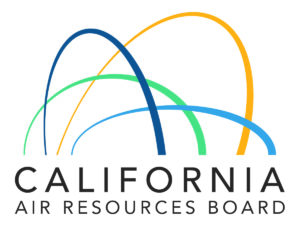Written on: August 1, 2021 by Doug Raymond
California Air Resources Board
The California Air Resources Board (CARB) held its public hearing on amendments to the Consumer Products volatile organic compound (VOC) rule in March of 2021. Since that time, staff has been working on changes to the original proposed amendments per the CARB Executive Board’s direction. This process is called a 15-day changes process—not because it takes 15 days but because when the changes are prepared and released to the public, the public has only 15 days to comment. If the changes proposed are significant, then staff may have to go back to the Executive Board for approval. In 33 years of monitoring this process, however, I have never seen that occur.
In June, staff did come back with a change in direction. 
One of the issues that CARB staff is reviewing is the proposed changes to the Innovative Product Exemption (IPE). These changes include adding a provision to modify how CARB treats compressed gas propellants, which is being considered because staff is attempting to add alternative ways to reduce the use of greenhouse gases, namely HFC-152a. This provision was reviewed by Industry and changes were requested. Staff declined this request, but in June, contacted Industry and stated that there will be changes made to the IPE proposal.
The changes to the IPE proposal include allowing the use of liquefied petroleum gases (LPGs) in the IPE. Industry has not yet seen the new language. The use of the LPGs in the IPE will likely have similar requirements as compressed gas, which include reducing the amount of HFC-152a by half, not increasing the ozone formation potential (OFP) of the product and similar performance to the original product, i.e. not needing to use more product to do the job.
This IPE provision is only targeted to hair spray, dry shampoo and personal fragrances. If the new language is feasible, this will be a big breakthrough toward using OFP to regulate Consumer Products, which uses the concept of reactivity. Reactivity allows for more flexibility and continues to achieve much needed ozone reductions for the State.
Remember, a reduction in VOC content does not always mean a reduction in ozone formation. However, a reduction in the reactivity of a product always reduces ozone formation. Industry will need to wait and see if the language that CARB releases is feasible; if so, then this could be the start of utilizing the concept of reactivity, which would be of benefit to Industry and the reformulation process.
AIM Act
On May 19, the U.S. Environmental Protection Agency (EPA) published a proposed rule in the Federal Register titled Phasedown of Hydrofluorocarbons: Establishing the Allowance Allocation & Trading Program under the American Innovation & Manufacturing Act, which implements certain provisions of the American Innovation & Manufacturing (AIM) Act, as enacted on Dec. 27, 2020. This proposed rule intends to establish the hydrofluorocarbon (HFC) production and consumption baselines; establish the allowance allocation program to phase down HFC production and consumption; determine an initial methodology to allocate allowances and allow for the transfer of those allowances; establish provisions to transfer allowances internationally; establish requirements to support compliance with phasing down HFC production and consumption; establish recordkeeping and reporting requirements; release certain data to provide transparency and support implementation of the program; and address certain other elements related to the effective implementation of the AIM Act.
Comments on this proposal rule were due by July 6, 2021. EPA must have its first allocation rule finished by Sept. 23, 2021. Thus, if you use HFCs in your products, this rule will be of importance to you. SPRAY